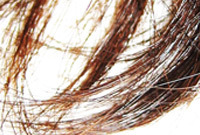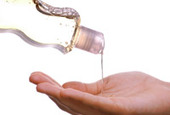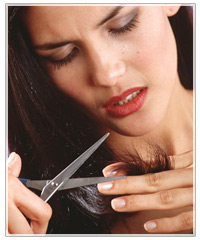 For a simple way to tell if your hair is damaged, run a strand of hair through your fingers.
For a simple way to tell if your hair is damaged, run a strand of hair through your fingers.
- If you can run your fingers along your hair strand smoothly then the light coating of sebum (the natural oil that covers all hair) is in check.
- If your hair feels rough or prickly, particularly on the ends, then all signs point to dryness and damage.
Natural Hair Damage
Natural hair damage is caused by a lack of moisture, which can happen if there isn’t enough moisture in the cortex of your hair or if there isn’t enough sebum coating your hair. This all causes your hair to dry out and can be brought about by:
- Aging.
- Genetics.
- Poor health.
- Poor diet.
- Hormonal imbalances.
While there isn’t much you can do to avoid natural hair damage, using a hair care routine such as the one outlined in our article Daily Hair Care Routine in 6 Easy Steps and using hair treatments regularly will help with the condition of your hair.
Styling Hair Damage
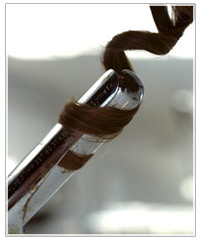 Hair damage that we cause ourselves is unfortunately something that is unavoidable.
Hair damage that we cause ourselves is unfortunately something that is unavoidable.
Simple everyday tasks such as washing your hair, brushing and even pulling your hair into an easy ponytail can all cause damage.
To minimize damage, always handle your hair as delicately as possible, be gentle when washing and brushing and use the best hair tools possible, such as a mild shampoo and a natural bristle brush on dry hair and a wide tooth comb on wet hair.
To reduce the level of damage that you cause to your hair you can also try the following tips:
- Keep in mind that spiky, heated rollers, metal combs and plastic hair brushes can all cause damage.
- Hair elastics made from rubber will tear your hair so it’s best to use elastics that are covered in cloth.
- Wrapping thin foam rubber around your heated rollers will help to limit damage.
- Curling irons and hair straighteners can dry and even burn your hair (if used incorrectly). Use them sparingly and always with a heat protection product.
- The sun, seawater, chlorinated water, air conditioning and central heating will zap the moisture right out of your hair so use scarves and hats when out in the elements, a swimming cap when you’re taking a dip, and moisture locking hair products if you spend most of your day in a room with air conditioning.
Chemical Hair Damage
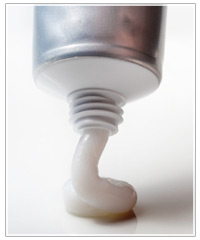 Chemical hair damage is caused when hair is incorrectly or too-often colored with bleach and tints or chemically permed or straightened.
Chemical hair damage is caused when hair is incorrectly or too-often colored with bleach and tints or chemically permed or straightened.
When the hair is overexposed to chemicals then portions of the hair shaft break down and become soft. This can leave you with hair that tangles easily and a hair color that looks brassy or even green.
While for most people it’s not realistic to give up chemically treating your hair all together, you can limit the damage done by spacing out any processes with an 8 to 10 week gap and trying your best to see a professional hairdresser to have your hair colored, permed or straightened as they have proper training with the chemicals and will know how to apply them to your hair safely.
Being aware of what causes damage to your hair and handling your hair with as much care as possible will go a long way towards keeping any hair damage to a minimum and help you to avoid more damage in the future.
Keep these hair care points in mind and every once in a while declare a damage free day by going with your natural hair texture and giving hair products and styling tools a miss. Who knows? You might even like your hair au naturel and prefer wearing it that way all the time!
